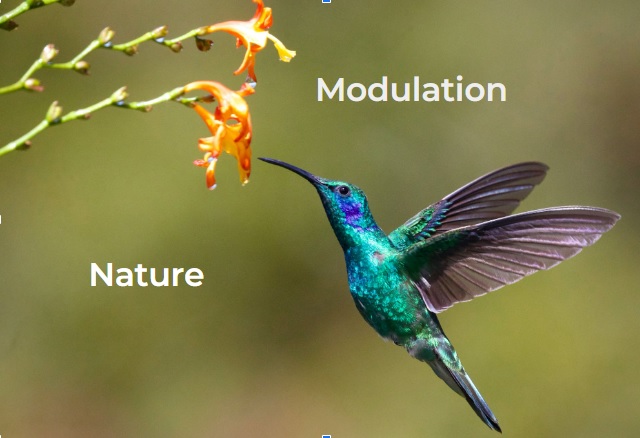The EMFSA June 2025 Newsletter explores new and emerging research across biology, health, and technology — from naturally occurring electric fields in hummingbirds to the interaction between EMFs and dental materials.

Nature’s own modulation: Some species sense and respond to subtle electric fields — a contrast to man-made wireless signals.
Image adapted from a photo by James Wainscoat on Unsplash.
• What Kind of Modulation Happens in Nature?
New research reveals that hummingbird flower mites respond to naturally modulated electric fields generated by the wingbeats and movements of hummingbirds. This biologically driven form of electroreception sheds light on how nature produces and responds to modulated signals — and how it compares to artificial modulation used in wireless technologies.
• Can Light at Night During Pregnancy Affect Fetal Development?
Emerging research suggests that circadian rhythm disruption may play a role in autism risk. In our latest article, we explore how maternal light exposure, especially at night, could impact the developing fetal brain.
• CACNA1C Gene
Did you know the CACNA1C gene helps regulate electrical signals in your brain, heart, and muscles? This calcium channel gene plays a vital role in early development and how cells communicate.
Notably, its relevance is gaining attention in EMF research — including a recent study exploring how 5G exposure may affect sleep EEG patterns in individuals with specific CACNA1C genotypes.
• How Do EMFs Interact with Dental Materials?
Recent research raises concerns about how mobile phone radiation and common EMF sources like hair dryers may affect dental implants and restorations. Titanium jaw implants, for example, could influence how radiation is absorbed in the head. Similarly, amalgam fillings might be more vulnerable than we think.
• ELF-EMF and Harmful Algal Blooms (HABs)
Read about a study exploring potential drivers of harmful algal blooms, suggesting that extremely low frequency electromagnetic fields (ELF-EMFs) may play a role in bloom initiation. Still, the exact mechanisms behind this link remain unclear and require further investigation.
• In Memory of Meris Michaels
We are saddened by her passing and extend our heartfelt condolences to her loved ones. A tribute by PhoneGate Alert is included in our latest newsletter.
Read the full EMFSA June 2025 Newsletter: https://mailchi.mp/emfsa/modulation-nature
Sign up to receive our monthly newsletter: https://www.emfsa.co.za/newsletter/

